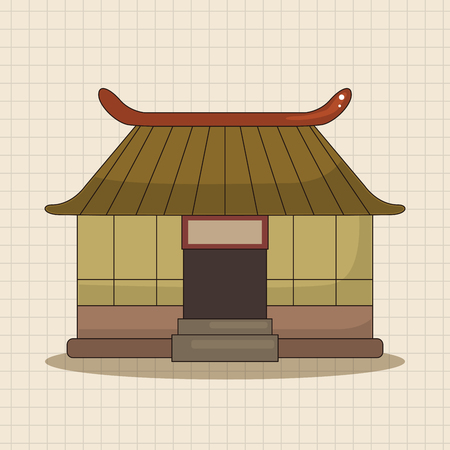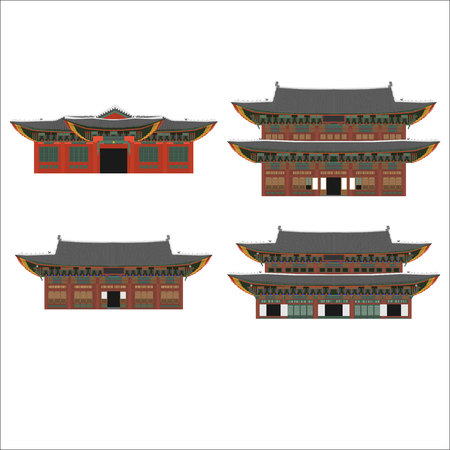Introduction to Feng Shui and Colour Theory
Feng Shui, an ancient Chinese practice, centres on harmonising individuals with their surrounding environment. Rooted in Taoist philosophy, its principles emphasise the careful arrangement of space and the strategic use of elements to enhance wellbeing, prosperity, and balance. Among these elements, colour plays a pivotal role, serving not just as aesthetic embellishment but as a conduit for energy flow—or qi. Traditional Feng Shui divides colours according to the Five Elements theory: Wood, Fire, Earth, Metal, and Water. Each element is associated with specific hues that symbolise different energies and emotional responses. For example, red signifies vitality and good fortune, while blue is linked to calmness and wisdom. These associations have deep cultural roots in Chinese history, where colour symbolism permeates art, architecture, and daily life. As British homeowners increasingly seek holistic approaches to interior design, understanding the origins and significance of traditional Feng Shui colours provides valuable insight into their potential application within contemporary UK home decor.
2. Core Traditional Feng Shui Colours and Their Meanings
Feng Shui, deeply rooted in Chinese philosophy, attributes specific energies and symbolic meanings to colours, which can be thoughtfully integrated into contemporary UK home decor. Understanding these associations is essential for those seeking to harmonise their living spaces while respecting both cultural origins and modern British design sensibilities. The following table provides an overview of key Feng Shui colours, the elements they represent, and their traditional meanings:
| Colour | Element | Traditional Meaning |
|---|---|---|
| Red | Fire | Vitality, prosperity, luck, celebration |
| Green | Wood | Growth, renewal, health, balance |
| Yellow | Earth | Stability, nourishment, grounding energy |
| Blue | Water | Calmness, wisdom, communication, peace |
| White | Metal | Clarity, purity, precision, new beginnings |
The careful use of these colours in British homes is not simply about aesthetics; it involves a conscious choice to influence mood and spatial energy. For instance, incorporating red accents, such as cushions or artwork, can bring a sense of warmth and vibrancy—well-suited for social spaces like lounges or dining rooms. Conversely, green tones, popular in UK interiors due to the nation’s affinity with nature and gardens, encourage relaxation and rejuvenation when used in bedrooms or reading nooks.
Similarly, yellow hues, reminiscent of sunlight on a classic English morning, are ideal for kitchens or breakfast rooms where positivity is desired. Bluish shades, echoing the calm of the British coastline or lakes, are perfect for bathrooms or studies to promote tranquillity. Finally, white elements, often seen in contemporary UK minimalism, help create clarity and freshness while complementing period features or modern lines alike.
Integrating these core Feng Shui colours thoughtfully allows homeowners to bridge Eastern philosophy with Western practicality—achieving both visual harmony and balanced energy within the unique context of the British home.

3. Adapting Feng Shui Colour Palettes to UK Architecture
Integrating traditional Feng Shui colours into contemporary British homes requires an understanding of both the cultural significance behind these colours and the unique characteristics of UK architecture. British homes often feature period elements such as Victorian cornices, Edwardian bay windows, or Georgian symmetry, as well as more modern open-plan layouts in new builds. Common materials include exposed brick, timber floors, stone fireplaces, and large sash windows that invite natural light—each providing a distinct canvas for colour application.
Traditional Feng Shui assigns specific meanings and energies to colours—red for vitality, green for growth, blue for calm, yellow for stability, and white for clarity. When considering how these hues can complement UK interiors, it is essential to respect the subtle and often muted palettes favoured in British design. For example, deep reds or rich greens can be used as accent walls or soft furnishings in living rooms with neutral backdrops, enhancing character without overwhelming the space. Soft blues and sage greens work harmoniously with the natural tones of wooden floors and stonework frequently found in British homes, while yellows add warmth to north-facing rooms that may lack sunlight.
The prevalent architectural layouts in the UK—such as terraced houses with narrow corridors or semi-detached properties with segmented living spaces—benefit from a careful balance of colour placement. Using lighter Feng Shui colours like off-white or pale yellow in smaller rooms can create an impression of openness and flow, while bolder tones may define communal areas or highlight period features. By thoughtfully blending traditional Feng Shui palettes with the architectural strengths of British homes, residents can achieve both aesthetic harmony and a sense of positive energy throughout their living environment.
4. Blending Eastern Traditions with British Tastes
Successfully integrating traditional Feng Shui colour theory into contemporary UK home decor requires a considered approach that respects both cultural origins and local sensibilities. The key lies in harmonising the symbolic meanings of colours with British design preferences, typical room functions, and the materials commonly used in the UK.
Analysis of Harmonisation Strategies
Feng Shui assigns specific energies to colours: green for growth, red for vitality, yellow for stability, blue for calmness, and white for purity. In contrast, modern British interiors often favour neutral palettes, subtle contrasts, and natural textures such as wood, wool, and stone. The challenge is to maintain the integrity of Feng Shui while ensuring spaces feel comfortably British.
Adapting Colour Placement to Room Functions
The purpose of each room informs how Feng Shui colours can be applied within a UK context:
| Room Type | Traditional Feng Shui Colour | British Design Preference | Harmonised Solution |
|---|---|---|---|
| Living Room | Red (vitality), Green (growth) | Earthy neutrals with accent walls or textiles | Use muted red or green cushions, throws or artwork; maintain neutral backdrop |
| Bedroom | Blue (calmness), White (purity) | Pale blues, greys, soft whites | Combine soft blue bedding with crisp white linens; introduce natural wood for warmth |
| Kitchen/Dining Area | Yellow (nourishment), Green (freshness) | Creams, sage greens, natural timber | Add yellow-toned ceramics or green plants on wooden shelves; avoid overpowering primary tones |
| Home Office | Black (wisdom), Blue (focus) | Navy accents, deep wood finishes | Select navy stationery, black lamp bases or desk organisers against lighter desks and walls |
Sourcing Local Materials for Authenticity
Another effective approach is to select furnishings crafted from locally sourced materials—such as British oak or wool—which can be dyed or finished in Feng Shui-inspired hues. This not only supports sustainability but also ensures the home retains a distinctly British character while embracing Eastern principles.
Cultural Sensitivity in Decorative Choices
The best results come from subtlety: rather than overwhelming a space with bold Feng Shui colours, opt for understated accents—cushions, rugs, ceramics—that reflect their energy without clashing with the established aesthetic. Ultimately, this blend creates interiors that feel harmonious and grounded in both tradition and place.
5. Practical Application: Room-by-Room Ideas
Incorporating traditional Feng Shui colours into a typical UK home can be both stylish and harmonious, especially when tailored to the unique characteristics of British interiors. Below, we break down practical ideas for each room, taking into account natural light levels, the often grey and damp UK climate, and features such as Victorian fireplaces or Georgian cornices.
Living Room
The living room is often the social heart of a UK home. To encourage vibrant energy and warmth—especially in spaces that can feel cold or dim—consider using warm earth tones like ochre or terracotta, which align with Feng Shui’s earth element. If your living room enjoys ample natural light, gentle greens or soft blues can foster tranquillity without overwhelming period features like moulded ceilings or bay windows.
Kitchen
Kitchens in the UK are sometimes compact and may lack strong natural light, particularly in older terraced houses. To counteract this, add touches of red or orange (fire elements) through accessories such as tea towels or splashbacks. These hues can stimulate appetite and conversation but should be balanced with neutral bases to prevent overstimulation in smaller spaces.
Bedroom
For bedrooms, restful shades are key. Soft pastels—such as pale lavender (representing wisdom) or dove grey (for calm)—work well with typical British bedroom sizes and the cool climate. These colours pair beautifully with original timber floors or classic sash windows, maintaining a sense of heritage while supporting restorative sleep.
Bathroom
Bathrooms benefit from clean, refreshing energies. Incorporate water-inspired tones like aqua or deep blue tiles, which resonate with Feng Shui’s water element and complement white porcelain fixtures common in UK homes. Consider mirrors strategically placed to reflect natural daylight and visually expand smaller bathrooms typical in many British properties.
Hallways and Entrances
Hallways often set the first impression but can be narrow or poorly lit in traditional UK layouts. Use soft yellow or creamy white to brighten these areas and invite positive energy flow. Accentuate period details such as decorative cornicing by painting skirting boards in complementary tones for a subtle yet effective nod to both tradition and Feng Shui principles.
Balancing Heritage with Modern Needs
Throughout each room, respect existing architectural features by selecting colours that enhance rather than overshadow them. Layering traditional Feng Shui palettes onto classic British interiors is not about drastic change but about mindful enhancement—bringing together cultural wisdom and local character for a space that feels both grounded and uplifting.
6. Challenges and Misconceptions
While traditional Feng Shui colours are increasingly finding their way into contemporary UK home decor, several challenges and misconceptions persist. One common misunderstanding is the tendency to view Feng Shui as merely an aesthetic or exotic trend, rather than a complex cultural philosophy deeply rooted in Chinese history. This often leads to superficial application, where certain colours are chosen solely for their visual appeal without consideration of their symbolic meanings or the broader context of Feng Shui principles.
Another challenge lies in the risk of cultural appropriation. Many UK homeowners may unintentionally use Feng Shui elements without respecting their origins, which can result in misrepresentation or dilution of this ancient practice. For instance, using red simply because it is considered ‘lucky’ in some interpretations, without understanding its nuanced role within the Five Elements theory, may undermine both authenticity and effectiveness.
To integrate traditional Feng Shui colours respectfully and effectively, it is essential to engage with reliable sources—such as professional practitioners or scholarly texts—and to approach the process with cultural sensitivity. Collaboration with experts who understand both Feng Shui and local British contexts can help avoid tokenistic usage and foster a genuine appreciation of this philosophy.
Additionally, adopting an open-minded but critical perspective allows for adaptation that respects both tradition and modern British lifestyles. For example, rather than rigidly applying colour rules, one could focus on the underlying intention of harmony and balance that underpins Feng Shui, ensuring that integration supports wellbeing without resorting to stereotypes.
Ultimately, the key lies in education and dialogue. By fostering awareness about what Feng Shui truly represents—and acknowledging its rich heritage—UK homeowners can create spaces that are not only visually appealing but also culturally respectful and meaningful.
7. Conclusion: Creating Balance and Wellbeing
In summary, integrating traditional Feng Shui colours into contemporary UK home decor offers a thoughtful approach to achieving both aesthetic appeal and emotional comfort. By understanding the symbolic meanings behind classic hues such as green for growth, blue for calm, red for vitality, and yellow for warmth, homeowners can create living spaces that not only look stylish but also promote a sense of balance and wellbeing. These carefully chosen colours can soften modern interiors, counteract harsh lines, and enhance the overall atmosphere of British homes—whether it’s a period terrace in London or a new-build in Manchester. Ultimately, embracing Feng Shui principles in colour selection encourages mindfulness in design choices, supporting improved harmony, relaxation, and daily satisfaction within the home environment.


